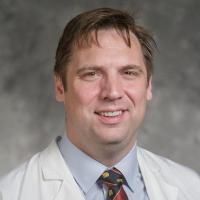A bony Chance fracture through L1 following posterior spinal fusion for adolescent idiopathic scoliosis: a case report.
Date
2021-05
Journal Title
Journal ISSN
Volume Title
Repository Usage Stats
views
downloads
Citation Stats
Abstract
Study design
Case report.Introduction
Instrumented posterior fusion using pedicle screws has been the mainstay of the surgical correction of adolescent idiopathic scoliosis since it was popularised by Roy-Camille in the 1970s. The aim of this case report is to describe the occurrence and salvage of an L1 chance fracture occurring through the lower instrumented vertebra following pedicle screw placement for posterior spinal instrumented fusion in the treatment of adolescent idiopathic scoliosis (AIS).Case report
A 15-year-old female patient underwent T2-L1 posterior instrumented fusion for a Lenke 1b deformity. The selection of fusion levels was made based upon standing and bending radiographs which showed a non-structural lumbar curve. Early recovery was uneventful. At 6 months post-operatively, the patient reported new deformity and pain. A chance fracture at L1 was diagnosed and subsequent extension of instrumentation to L3 was carried out. Final post-operative recovery was uneventful and the patient returned to an active lifestyle.Conclusion
Several factors can contribute to the occurrence of a fracture through an instrumented pedicle. This case shows that there must be due consideration of the small pedicle at L1 when it is chosen as the LIV.Type
Department
Description
Provenance
Citation
Permalink
Published Version (Please cite this version)
Publication Info
Rocos, Brett, So Kato, David Lebel and Stephen Lewis (2021). A bony Chance fracture through L1 following posterior spinal fusion for adolescent idiopathic scoliosis: a case report. Spine deformity, 9(3). pp. 859–862. 10.1007/s43390-020-00257-4 Retrieved from https://hdl.handle.net/10161/29699.
This is constructed from limited available data and may be imprecise. To cite this article, please review & use the official citation provided by the journal.
Collections
Scholars@Duke

Brett Rocos
I joined the team at Duke University Health from London, UK, where I was a Consultant Adult and Paediatric Spine Surgeon at Barts Health NHS Trust and Honorary Consultant Senior Lecturer at Queen Mary University of London. I completed my surgical training in in the South West of the UK and at the University of Toronto, and am fellowship trained in adult spine surgery, paediatric spine surgery, orthopaedic trauma surgery, research and healthcare management.
I am driven to support patients at every stage of their care, from clinic assessment, through surgery to discharge. Making sure that every person, adult, child, family or friend understands what’s wrong, helping them to choose the right treatment for them, and what the recovery will be like is an important priority.
My research activity focusses on finding effective new treatments for spinal disorders and bringing them to patients. Focusing on spinal deformity, I have led investigations in the UK, Canada and the USA, and I sit on the Global AO Knowledge Forum for Deformity and the Research Grants Committee at the Scoliosis Research Society. I have lectured in North America and Europe about the treatment of spine disorders for the Scoliosis Research Society, Global Spine Congress, AO Spine and Eurospine, and I have worked hard to produce research that improves the care for spine patients wherever they live. Lastly, I review for several orthopaedic journals and I am Deputy Editor of the Bone and Joint 360, a leading publication with a global readership.
Unless otherwise indicated, scholarly articles published by Duke faculty members are made available here with a CC-BY-NC (Creative Commons Attribution Non-Commercial) license, as enabled by the Duke Open Access Policy. If you wish to use the materials in ways not already permitted under CC-BY-NC, please consult the copyright owner. Other materials are made available here through the author’s grant of a non-exclusive license to make their work openly accessible.
